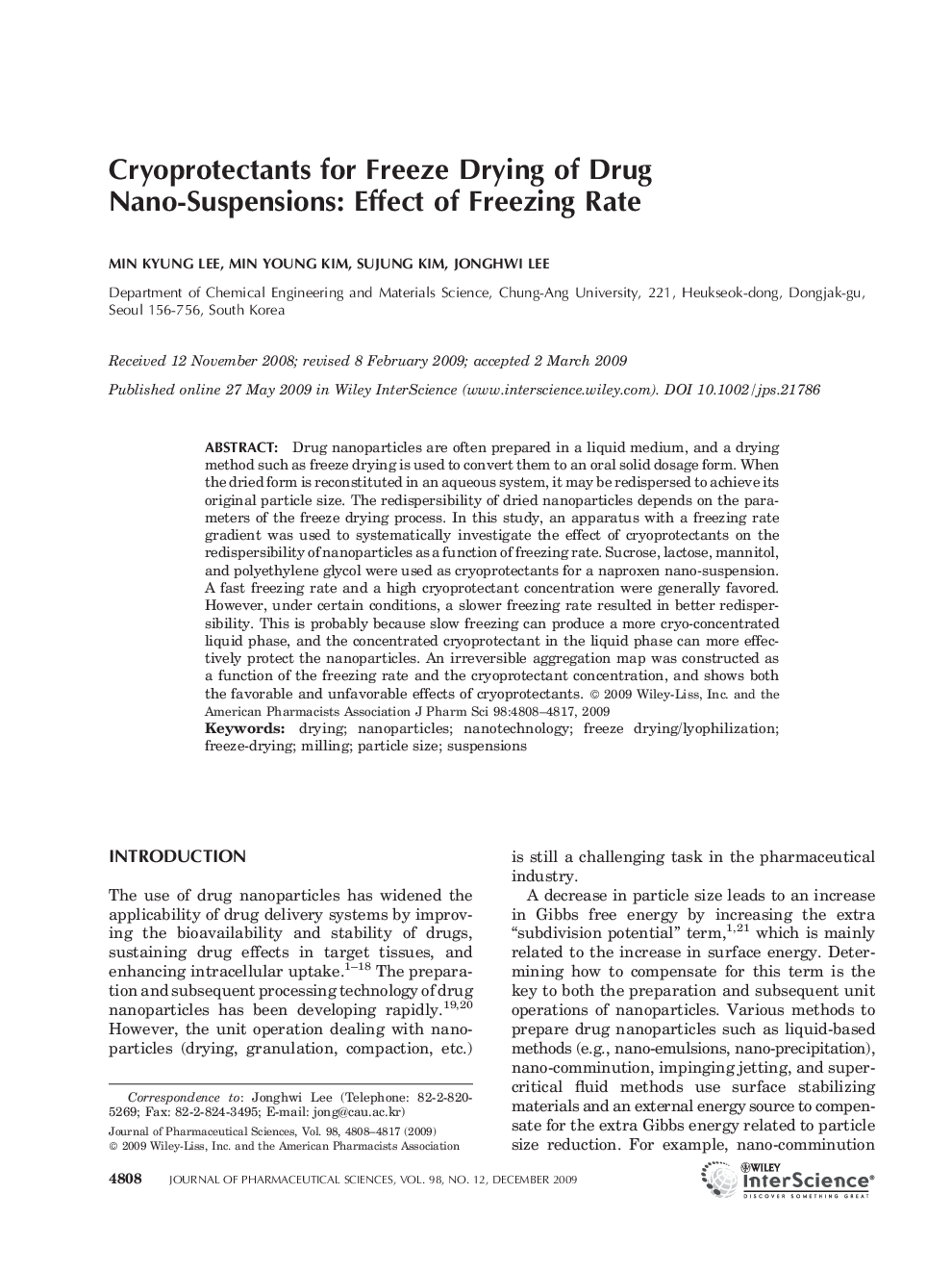| Article ID | Journal | Published Year | Pages | File Type |
|---|---|---|---|---|
| 2486588 | Journal of Pharmaceutical Sciences | 2009 | 10 Pages |
Abstract
Drug nanoparticles are often prepared in a liquid medium, and a drying method such as freeze drying is used to convert them to an oral solid dosage form. When the dried form is reconstituted in an aqueous system, it may be redispersed to achieve its original particle size. The redispersibility of dried nanoparticles depends on the parameters of the freeze drying process. In this study, an apparatus with a freezing rate gradient was used to systematically investigate the effect of cryoprotectants on the redispersibility of nanoparticles as a function of freezing rate. Sucrose, lactose, mannitol, and polyethylene glycol were used as cryoprotectants for a naproxen nano-suspension. A fast freezing rate and a high cryoprotectant concentration were generally favored. However, under certain conditions, a slower freezing rate resulted in better redispersibility. This is probably because slow freezing can produce a more cryo-concentrated liquid phase, and the concentrated cryoprotectant in the liquid phase can more effectively protect the nanoparticles. An irreversible aggregation map was constructed as a function of the freezing rate and the cryoprotectant concentration, and shows both the favorable and unfavorable effects of cryoprotectants. © 2009 Wiley-Liss, Inc. and the American Pharmacists Association J Pharm Sci 98:4808-4817, 2009
Keywords
Related Topics
Health Sciences
Pharmacology, Toxicology and Pharmaceutical Science
Drug Discovery
Authors
Min Kyung Lee, Min Young Kim, Sujung Kim, Jonghwi Lee,
